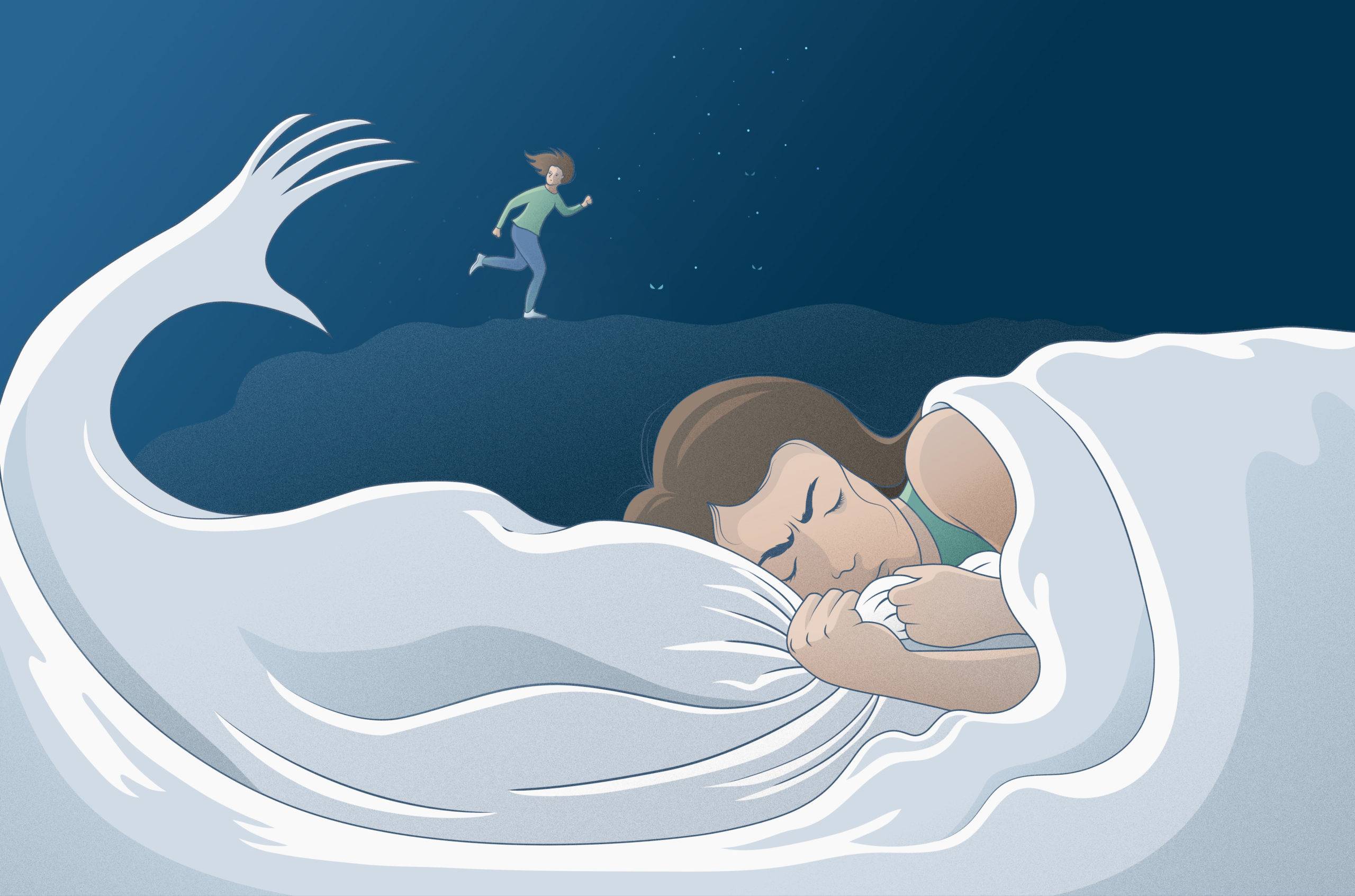Nightmares in Adults

Nightmares in Adults
When jolted awake by a nightmarish ordeal, one might assume they stand alone among grown-ups grappling with such nocturnal terrors. After all, isn’t adulthood synonymous with outgrowing the clutches of nightmares?
While it holds true that nightmares predominantly haunt the dreams of children, statistics unveil a surprising revelation – one in every two adults occasionally succumbs to the harrowing grip of nightmares. Moreover, a fluctuating percentage ranging from 2% to 8% of the adult populace finds themselves besieged by these unsettling dreams.
Do your nightmares unfurl a tapestry of distress, intruding upon the sanctity of your sleep with unwavering regularity? If affirmative, the imperative lies in unraveling the enigma behind your adult nightmares, paving the way for transformative adjustments.
Defining Nightmares:
Nightmares materialize as vividly realistic, disconcerting dreams that abruptly yank you from the depths of profound slumber. They orchestrate a symphony of fear, causing your heart to throb with trepidation. Their theatrical debut often unfolds during the realm of rapid eye movement (REM) sleep, the primary domain of dreams. As the night unfurls, the elongation of REM sleep phases predisposes you to encounter nightmares predominantly in the early morning hours.
The tapestry of nightmares encompasses an array of subjects, personalized to each dreamer. Yet, common threads weave through the collective experience – the inability to flee impending danger swiftly or the sensation of plummeting from towering heights haunts the dreams of many adults. For those scarred by traumatic events, recurrent nightmares revolving around those experiences may manifest.
Distinguishing Nightmares from Night Terrors:
Although both nightmares and night terrors jolt individuals awake in paralyzing fear, they differ fundamentally. Night terrors materialize within the initial hours of succumbing to slumber, resembling feelings more than dreams. Upon awakening, individuals grapple with a terror whose origin eludes recollection.
Triggers of Adult Nightmares:
The genesis of adult nightmares often emanates spontaneously, yet diverse factors and underlying disorders can act as catalysts.
Late-night snacks, catalyzing heightened metabolism and brain activity, may usher in nightmares for some. Certain medications, particularly those influencing brain chemistry such as antidepressants and narcotics, intertwine with heightened nightmare frequencies. Non-psychological medications, inclusive of select blood pressure drugs, too, may unfurl nightmares in the adult psyche.
Withdrawal from medications or substances, spanning alcohol to tranquilizers, stands poised as a potential nightmare catalyst. Should alterations in medication coincide with shifts in nightmare frequency, consultation with a medical professional becomes paramount.
Sleep deprivation emerges as a plausible contributor to adult nightmares, a reciprocal dance that potentially begets nightmare disorders. However, the confirmation of this cyclical nexus remains elusive.
Psychological triggers, ranging from anxiety to depression, manifest as formidable architects of adult nightmares. Notably, post-traumatic stress disorder (PTSD) emerges as a common harbinger of chronic, recurring nightmares.
Certain sleep disorders, encompassing sleep apnea and restless legs syndrome, can also cast a nightmarish spell upon adults. In cases defying clear causation, chronic nightmares may emerge as a distinct sleep disorder, with a hereditary predisposition.
Health Ramifications of Adult Nightmares:
Nightmares transcend mere nocturnal disturbances when they cast a pervasive shadow on one’s health and well-being. Amid nightmare sufferers, those entwined with anxiety or depression bear a heavier burden, enduring heightened psychological repercussions. Although the intricacies elude comprehension, an unsettling linkage connects nightmares with suicidal tendencies. Given the potential toll on life quality, regular consultation with a medical professional stands imperative.
The cascade effect of sleep deprivation, spurred by nightmares, cascades into a medley of medical afflictions, spanning from heart disease to depression and obesity.
In instances where adult nightmares signify untreated sleep apnea or PTSD, the underlying disorders extend their ominous influence over both physical and mental health.
Mitigating Adult Nightmares:
Gratefully, avenues abound for mitigating the frequency and impact of adult nightmares. Primarily, if a particular medication fuels your nightmares, tweaking the dosage or opting for an alternative prescription may eradicate this unwanted side effect.
For individuals ensnared by nightmares arising from conditions like sleep apnea or restless legs syndrome, addressing the root disorder offers a potential respite.
Despair not if your nightmares remain untethered to illness or medication; behavioral shifts wield a proven efficacy, benefitting 70% of adults grappling with nightmares rooted in anxiety, depression, or PTSD.
Enter imagery rehearsal treatment, a beacon in the landscape of cognitive behavioral therapy. This promising technique empowers chronic sufferers to reshape their nightmares through mental rehearsal. Occasionally, medications might synergize with therapy, particularly for PTSD-related nightmares, although their efficacy hasn’t achieved unequivocal confirmation.
Individual initiatives to curtail nightmare frequency also wield influence. Maintaining a consistent wake-sleep rhythm assumes paramount importance. Regular exercise emerges as a stalwart ally, alleviating anxiety and stress that can catalyze nightmares. The therapeutic embrace of yoga and meditation finds resonance as well.
Anchoring good sleep hygiene becomes pivotal in warding off sleep deprivation’s encroachment, a harbinger of adult nightmares. Transform your bedroom into a haven of tranquility, reserved solely for sleep and intimate moments, dissociating it from stress-inducing activities. Prudence dictates temperance in the consumption of alcohol, caffeine, and nicotine, given their prolonged presence in the system and potential to disrupt sleep patterns.












